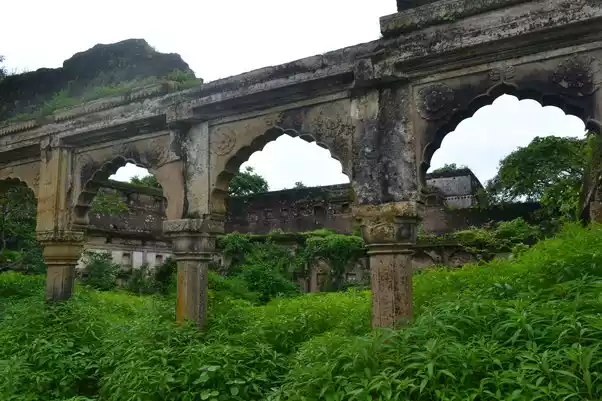Comprehensive Guide to Sonbhadra District
Introduction
Sonbhadra, a district in the Indian state of Uttar Pradesh, is a land of immense historical, cultural, and geographical significance. Nestled in the southeastern part of the state, Sonbhadra is often referred to as the "Energy Capital of India" due to its abundant power plants and rich mineral resources. This district is not only pivotal for its industrial contributions but also for its unique blend of natural beauty, ancient heritage, and vibrant cultural tapestry.
Geography and Demography
Geographical Overview
Sonbhadra is the second-largest district in Uttar Pradesh, covering an area of approximately 6,788 square kilometers. It is bordered by the states of Bihar, Jharkhand, Madhya Pradesh, and Chhattisgarh, making it a crucial geographical link. The district is characterized by its diverse topography, including hills, valleys, forests, and rivers, most notably the Son River, from which the district derives its name.
Demographic Profile
According to the 2011 Census of India, Sonbhadra has a population of approximately 1.86 million. The district exhibits a balanced demographic distribution with a sex ratio of 919 females for every 1000 males and a literacy rate of 66.97%. The population is predominantly rural, with agriculture being the mainstay of the economy. However, the urban areas are growing rapidly due to industrialization.
Historical Significance
Ancient and Medieval History
Sonbhadra's history dates back to ancient times, with evidence of human settlement in the prehistoric era. The region has been mentioned in various historical texts and is believed to have been part of the Kuru and Magadha empires. The medieval period saw the rule of several dynasties, including the Mauryas, Guptas, and the Chandels, each leaving an indelible mark on the region's cultural and architectural landscape.
Modern History
In the modern era, Sonbhadra played a significant role in India's struggle for independence. Post-independence, the district became a focal point for industrial development, particularly in the energy sector, with the establishment of numerous thermal and hydroelectric power plants.
Cultural Heritage
Festivals and Traditions
Sonbhadra's cultural heritage is a rich tapestry woven with the threads of its diverse communities. The district celebrates various festivals with great fervor, including Diwali, Holi, Eid, and Chhath Puja. Traditional folk music and dance forms such as Karma, Jhumar, and Kajri are integral to the local culture, reflecting the agrarian lifestyle and the region's historical narratives.
Languages and Literature
Hindi is the predominant language spoken in Sonbhadra, followed by Bhojpuri and a mix of tribal languages. The district has a vibrant literary scene, with numerous local poets and writers contributing to Hindi literature. Notable among them is the revered poet and freedom fighter, Dushyant Kumar, whose works continue to inspire generations.
Administration
Governance Structure
Sonbhadra is divided into eight tehsils: Robertsganj, Ghorawal, Dudhi, Myorpur, Babhani, Chopan, Obra, and Anpara. Each tehsil is administered by a Sub-Divisional Magistrate (SDM). The district administration is headed by the District Magistrate (DM), who oversees law and order, development projects, and implementation of government schemes.
Administrative Challenges
Despite its industrial growth, Sonbhadra faces several administrative challenges, including infrastructure development, environmental management, and social welfare. The district administration is actively working on initiatives to improve healthcare, education, and rural development to enhance the quality of life for its residents.
Economy
Industrial Hub
Sonbhadra is renowned as the "Energy Capital of India" due to its extensive network of power plants. Major thermal power plants in the district include the NTPC's Singrauli Super Thermal Power Station and the Rihand Super Thermal Power Station. Additionally, the district is rich in minerals like limestone, dolomite, and bauxite, fostering a thriving mining industry.
Agricultural Economy
Agriculture remains a vital part of Sonbhadra's economy, with a majority of the population engaged in farming. The fertile plains of the district support the cultivation of crops such as rice, wheat, pulses, and oilseeds. Efforts are being made to introduce modern farming techniques and improve irrigation facilities to boost agricultural productivity.
Tourism
Natural Attractions
Sonbhadra is a treasure trove of natural beauty, offering a myriad of attractions for nature enthusiasts. Key natural attractions include:
- Vindhya Range: A scenic mountain range providing breathtaking views and numerous trekking opportunities.
- Rihand Dam: A massive reservoir and popular picnic spot, ideal for boating and fishing.
- Kaimur Wildlife Sanctuary: A haven for wildlife, home to species such as leopards, tigers, and various bird species.
Historical and Cultural Sites
The district boasts several historical and cultural landmarks that attract tourists from across the country:
- Vijaygarh Fort: An ancient fort with a rich history dating back to the Chandela dynasty.
- Amarkantak: A pilgrimage site and the source of the Narmada River, revered by Hindus.
- Shaktipeeths: Sacred shrines dedicated to the goddess Shakti, with significant religious importance.
Cuisine
Sonbhadra's cuisine is a delightful blend of traditional Uttar Pradesh flavors with influences from neighboring states. Some popular dishes include:
- Litti Chokha: A staple dish made from roasted wheat balls served with mashed vegetables.
- Chana Sattu: A nutritious drink made from roasted gram flour, popular during summer.
- Thekua: A traditional sweet snack made from wheat flour, jaggery, and ghee, often prepared during festivals.
The local cuisine is characterized by its use of fresh, locally-sourced ingredients and traditional cooking methods, offering a unique gastronomic experience.
Conclusion
Sonbhadra is a district that epitomizes the confluence of history, culture, and modernity. Its strategic location, rich natural resources, and cultural diversity make it a significant region in Uttar Pradesh. As Sonbhadra continues to develop, it retains its unique identity, offering a rich and multifaceted experience to residents and visitors alike. The district's journey from ancient times to the present day is a testament to its resilience and potential, making it a fascinating subject for exploration and admiration.
